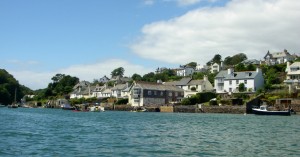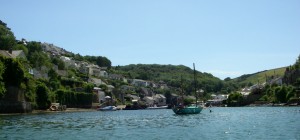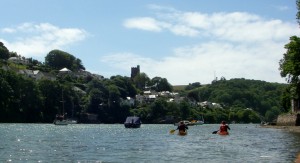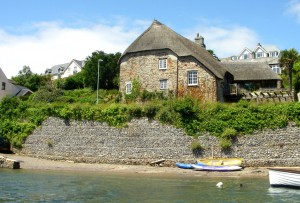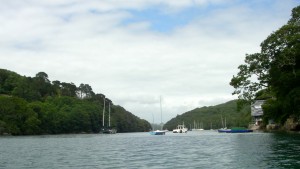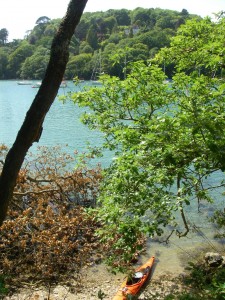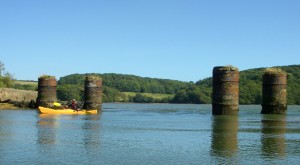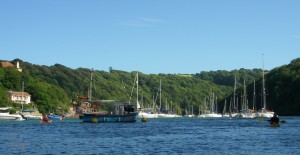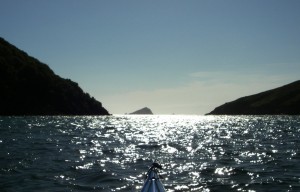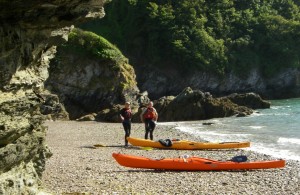The river Yealm is one of the numerous short but vigorous rivers which flow southwards from Dartmoor. Near its junction with the English channel, but up a side creek, are the two small towns facing each other across the water.
Our starting point was the hard by the Ship Inn at Noss Mayo. We chose a neap tide, so there is already plenty of mud exposed. On the other hand, at low neap tide there is still some water in the heavily silted estuary.
Opposite, across Newton Creek, is the prosperous town of Newton Ferrers. The fishing industry has declined but rich commuters, retirees and downsizers have amply made up for that. We turned up the short creek to its tidal limit.
Then retraced our route towards the main estuary, passing Noss church to the south.
These steep Devon valleys take a lot of maintenance to stop the slope sliding down. The modern stabilisation method is nearly always with gabions, wire cages filled with loose stones, often from far away. One wonders how their durability will compare with the traditional stone walls of chevron-laid elongate stones.
We turned north into the steep wooded valley of the Yealm estuary.
Our lunch stop was atop a steep cliff under the trees of the public Newton wood, looking across to the fine garden of Thorn house, with exotic trees.
From here upstream the estuary is shallow. At the tidal limit a wall stretches across with the river spilling over at the northern end.
Returning along the north shore we passed into a considerable side creek which was once bridged by a railway leading to a quarry. This gave a short relief from the fierce south west wind.
On our return, we passed by the entrance to Newton Creek with its abundance of fancy yachts and entered the final reach of sheltered steep woodland before the harsh landscape of the sea coast.
The triangular profile of The Great Mew Stone was three km away, but would be a hard reach in the fierce wind, so we opted for Cellar Beach, one of the few easy landings on this harsh coast. The name probably refers to the fishermen’s equipment sheds, now vanished.
We surfed back on the breeze through the steep valley but found our departure point too muddy to land without a major cleaning operation before entering our car, so we paddled over to the Newton side for the journey home.
This is probably my last blog entry from the south Devon coast. I have emigrated to Denmark, where I enjoy the gentler seascape and sandy margins of Roskilde fjord. As I near my eightieth year I am losing confidence in my skill to endure and even enjoy the fickle weather and rocky surf-bound shores of the coast of south west England, so the usually gentler waters of the Baltic region will be my paddling area. I thank the members of the Canoe section of the Dartmouth Yacht Club for their good company over more than a decade.

